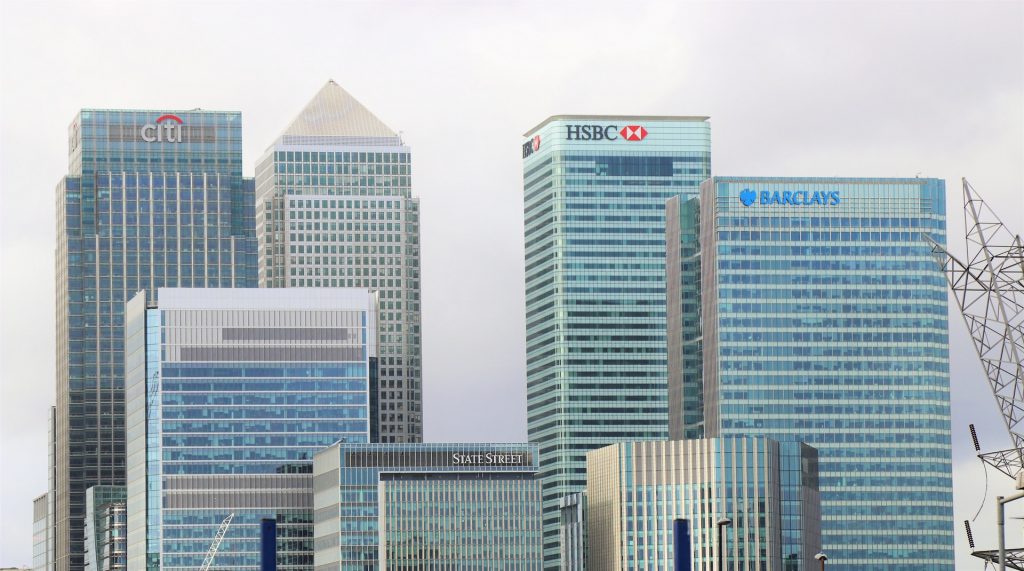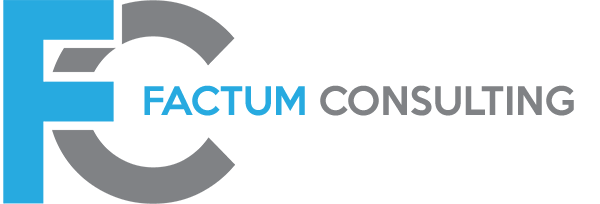Or in some cases, two well-established industry players make nice and merge into a new power house. Naturally, both cases happened in 2017. And we cover a number of these across major industries we work and play in:
- Energy
- Healthcare
- Financial services
- Software/technology
- Multi-industry
Read on to find out which companies peaked our interest (and will likely peak yours).
Mergers & Acquisitions in Energy
First up, energy. In this industry in 2017, we saw one major player acquire another. Plus, two cases of smaller companies banding together.

General Electric acquires Baker Hughes (Reuters). After a failed $28 billion merger with Halliburton in 2016 due to U.S. and European antitrust opposition, Baker Hughes wound up still closing a deal 2017, only with GE’s oil and gas business.
The M&A numbers rundown:
- Deal amount: $7.5 billion (cash)
- Parent company ownership: 62.5%
- Finalized date: July 2017
The deal makes the new company”called œBaker Hughes, a GE Company”the world’s 2nd largest oilfield service provider by revenue (behind only Schlumberger). Â In this respect, Baker Hughes keeps its name, while gaining the brand power and recognition of GE, as well as GE’s R&D facilities and technological capabilities.
Patterson-UTI Energy mergers with Seventy Seven Energy (World Oil). Way back in 2001, then-Patterson Energy merged with then-UTI Energy to form Patterson-UTI Energy. Fast forward to 16 years later, and the company initiates another major merger in the form of Patterson-UTI and Seventy Seven Energy.
The M&A numbers rundown:
- Deal amount: $1.76 billion (value including debt)
- Parent company ownership: N/A
- Finalized date: April 2017
As part of the deal, there was a no-cash swap of newly issued shares from Patterson-UTI stock. Shareholders received 1.7851 shares from Patterson-UTI for each share of Seventy Seven Energy.
According to Oil & Gas Journal, œThe combined firm will operate 201 high-specification drilling rigs and have a pressure pumping fleet with more than 1.5 million hp of hydraulic fracturing.
C&J Energy Services acquires O-Tex Holdings (PR Newswire). In the niche area of oilfield cementing services, O-Tex was the 4th largest provider, according to internal data and industry sources.
The M&A numbers rundown:
- Deal amount: $132.5 million (cash); 4.42 million shares (C&J’s common stock)
- Parent company ownership: 100%
- Finalized date: Nov 2017
Acquiring O-Tex immediately pumped up C&J’s cementing business to compete with larger oilfield service providers, especially in cementing.
Mergers & Acquisitions in Healthcare
Next up is healthcare. In this industry in 2017, we saw several billion dollars’ worth of acquisitions by healthcare systems.

UnitedHealth’s Optum unit acquires Surgical Care Affiliates (Reuters). The deal created a œcomprehensive ambulatory care services platform, including primary care, urgent care and surgical care services (via CNBC).
The M&A numbers rundown:
- Deal amount: $2.3 billion (cash)
- Parent company ownership: 100%
- Finalized date: Jan 2017
UnitedHealth was already an industry leader in healthcare, but through this acquisition, it gained 205 surgical facilities, which helped serve over 1 million patients across 30+ states.
Steward Health Care System acquires IASIS Healthcare (Boston Business Journal). With the completed acquisition, Steward’s footprint grew to 36 hospitals across 10 states. With an estimated $8 billion in revenue, the system became the largest private hospital operator in the country.
The M&A numbers rundown:
- Deal amount: $2 billion (est. value)
- Parent company ownership: 100%
- Finalized date: Oct 2017
Naturally, the acquisition also bolstered Steward’s employee base (to 37,000), employed physician roster (1,400), and integrated network physicians (to 4,700), as shared on Modern Healthcare.
The Hartford acquires Aetna’s U.S. group life and disability business (Reuters). Through the acquisition, The Hartford rose as the 2nd largest group life and disability insurer in America, serving over 20 million customers.
The M&A numbers rundown:
- Deal amount: $1.45 billion (cash)
- Parent company ownership: 100%
- Finalized date: Oct 2017
In addition to its customer growth, its employee base also grew, with nearly 1,800 employees from the acquired Aetna group joining The Hartford (via Insurance Journal).
Mergers & Acquisitions in Financial Services
Switching gears to financial services. In this industry in 2017, we saw several billion dollars’ worth of regional banking mergers and acquisitions.

Sterling Bancorp acquires Astoria Financial (Newsday). In America’s financial capital in the northeast, Sterling Bancorp’s all-stock purchase of Astoria not only grew the financial institution’s footprint but it’s assets as well (to $30 billion).
The M&A numbers rundown:
- Deal amount: $1.45 billion (cash)
- Parent company ownership: 100%
- Finalized date: Oct 2017
As noted by Seeking Alpha, Sterling œhas a proven track record of growing through acquisitions. However, an unfortunate aftereffect of some M&A deals is the shedding of personnel deemed redundant or unneeded. In this case, Sterling laid off about 200 employees (all former Astoria staff).
While such layoffs are not uncommon in post-merger integrations, they are sometimes not necessary. Considering certain merger aspects and performing proper due diligence in human resource planning as part of deal discussions can help stave off large layoffs.
First Horizon National acquires Capital Bank Financial (Nasdaq). Down in the southeast, Capital Bank was bought in cash and stocks by First Horizon, making the combined financial institution the 4th largest regional bank in that part of the country.
The M&A numbers rundown:
- Deal amount: $2.2 billion (cash and stocks)
- Parent company ownership: 100%
- Finalized date: Dec 2017
Regarding brand perception, Capital Bank will retain its name on branches outside of Tennessee (where First Horizon is headquartered).
Pinnacle Financial Partners acquires BNC Bancorp (Nashville Business Journal). Also in the southeast, Pinnacle’s all-stock acquisition of BNC provided the former with its first out-of-state footprint.
The M&A numbers rundown:
- Deal amount: $2 billion (stocks)
- Parent company ownership: 100%
- Finalized date: Jun 2017
Of interest is Pinnacle’s back-and-forth decision about which of the two operating systems (Pinnacle’s or BNC’s) to convert. (They eventually decided to convert Pinnacle’s.) This is an often-sensitive issue for banks due to the high customer interaction of their systems. A nod to the importance of effective systems management.
Mergers & Acquisitions in Software/Technology
Software/technology is up next. In this industry in 2017, we saw several large players in tech make key acquisitions to bolster their offering.

Hewlett Packard Enterprise (HPE) acquires Nimble Storage (The Register). On an apparent acquisition spree of several IT-related companies since its split from parent HP, HPE nabbed Nimble in an all-cash purchase.
According to Nasdaq, the reason for the acquisition was œbelieved to be the company’s strategy of pushing itself further into the hybrid IT infrastructure space.
The M&A numbers rundown:
- Deal amount: $1.2 billion (cash)
- Parent company ownership: 100%
- Finalized date: Apr 2017
By way of Nimble’s capabilities, HPE reentered public cloud storage and took advantage of InfoSight, the storage industry’s leading cloud-based management and predictive analytics tool.
Intel acquires Mobileye (Engadget). Intel’s all-cash acquisition of Mobileye empowered the tech giant to further its encroachment in the self-driving automobile space.
According to Fortune, Mobileye had a majority market share. It was the largest supplier of the computer visions chips used in advanced driver assistance systems build into vehicles made by the likes of Audi, BMW, Ford, and General Motors.
The M&A numbers rundown:
- Deal amount: $15.3 billion (cash)
- Parent company ownership: 84%
- Finalized date: Aug 2017
With a net profit margin of 30% in 2016, Mobileye also had more to offer than just envious tech. The acquired company produced high-margin chips that afforded near-term return on investment, not to mention its potential to propel Intel forward in the race to deliver autonomous vehicles.
Cisco acquires AppDynamics (Fortune). Who had the unabashed fortitude to snatch up a startup just days before it was scheduled to IPO? Cisco.
Why? TechCrunch theorized it was partly a longer-term strategy to move from hardware to cloud software, but mainly because of the copious amount of rich data AppDynamics had collected.
The M&A numbers rundown:
- Deal amount: $3.7 billion (cash)
- Parent company ownership: 100%
- Finalized date: Mar 2017
In addition, AppDynamics’ buyout provided Cisco with a tool for monitoring app performance, regardless of the delivery platform. Conceptually, this enabled quicker discovery of issues prior to affecting users, a critical benefit.
Mergers & Acquisitions with Multi-Industry Brands
Lastly, there’s a few multi-industry (and just plain well-known) brands we covered as well.

Amazon acquires Whole Foods (Bloomberg). This particular acquisition took many people by surprise. In what seemed like a backwards move for the ecommerce giant, Amazon suddenly gained a huge physical footprint across America with this grocery chain.
The M&A numbers rundown:
- Deal amount: $13.7 billion (cash)
- Parent company ownership: 100%
- Finalized date: Aug 2017
We actually wrote an in-depth piece about this M&A deal back when it was first announced.
Verizon acquires Yahoo (CNBC). After a long lead time, a reveal about data breaches, and several companies making a play for it, Yahoo finally succumbed to Verizon’s advances (not that it had much choice). The deal centered around Yahoo’s core internet business, including Yahoo Finance.
Verizon combined the newly acquired Yahoo assets with its AOL brands under a new subsidiary called Oath, with former CEO of AOL Tim Armstrong leading.
The M&A numbers rundown:
- Deal amount: $4.48 billion (cash)
- Parent company ownership: 100%
- Finalized date: Jun 2017
Like the Amazon deal, we also wrote an in-depth piece about this acquisition, with the leading question being whether Verizon and Yahoo considered their employees in the deal.
Google acquires HTC team (PR Newswire). Departing slightly from the format of the other deals we’ve covered, Google acquired a specific team within HTC as part of a cooperation agreement. Many of the former HTC employees worked on the Pixel smartphone, so there was already a strong relationship at play.
The M&A numbers rundown:
- Deal amount: $1.1 billion (cash)
- Parent company ownership: N/A
- Finalized date: Sep 2017
Business Insider made a comparison to another popular brand, noting the search giant’s recent signs of an œApple-like strategy toward its products. This talent acquisition clearly pointed to Google’s continued inroads in its hardware division.
Bonus: Merger Outlook for 2018
We’re only a month into the new year, and there’s already been several announcements of mergers in several industries. Some surprising; some not so much. But all quite interesting.

CVS Health to acquire Aetna (The New York Times). Ending 2017 year on a surprising note, CVS Health made moves to acquire one of the largest health insurers in America for a staggering $69 billion. We’re definitely looking at blurred lines in healthcare in 2018.
Keurig to acquire Dr Pepper Snapple (CNN Money). Announced at the end of January, this merger is sure to give the food and beverage industry something to chew on.
Becoming Keurig Dr Pepper after the merger, the combined company will bring together all its long-standing food and beverage brands”including Dr Pepper, 7UP, Snapple, A&W (my personal favorite), and Sunkist”with the now-loved Keurig single-serve coffee pods.
So much caffeine; so little time!
Bacardi to acquire Patron (Bloomberg). And we saved the most tantalizing one for last. For those partial to spirits, Bacardi’s $5.1 billion acquisition of Patron should whet your palette. Though it’s not the first time these two have partied together. Back in 2008, Bacardi took a 30% stake in Patron. So, this is essentially Bacardi finally sealing the deal.
In any case, it’s an acquisition that you’ll likely want to savor. Or as the crew over at Morning Brew aptly sums up: œplease merge responsibly.
—
Have thoughts you want to share about this post? Leave a comment below and join the conversation!

